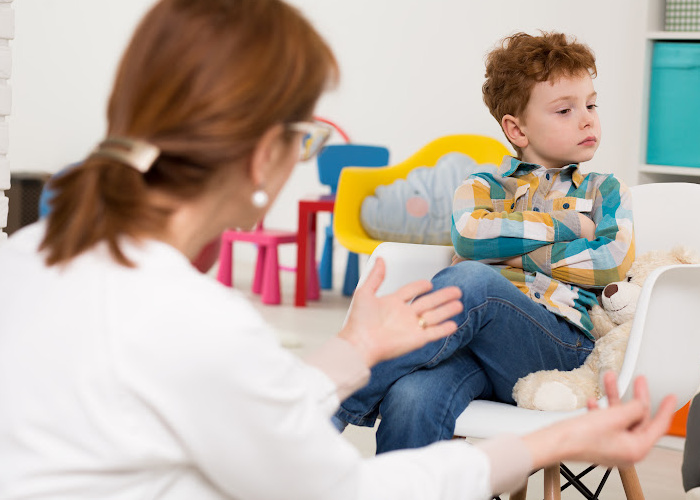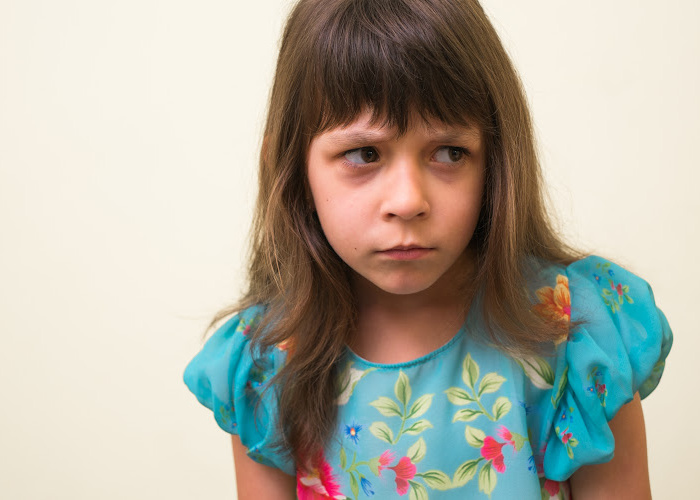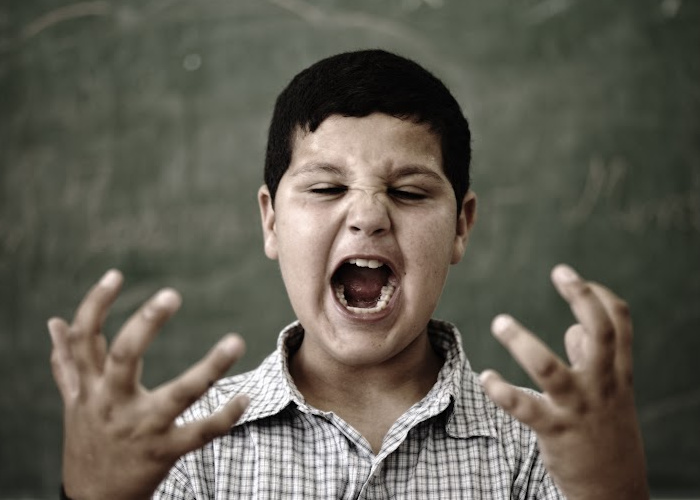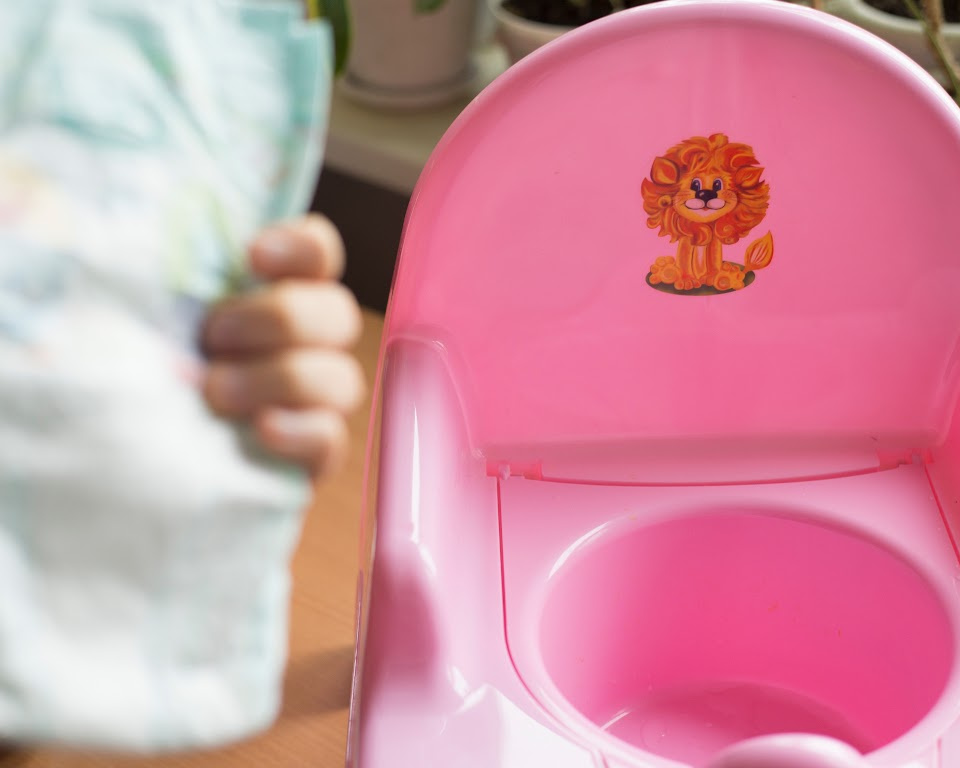Understanding how to communicate with a nonverbal autistic child is a challenge many parents, caregivers,…

How to Stop Autistic Child from Hitting Others: A Guide for Parents
Dealing with the multifaceted aspects of autism can poses unique challenges for families, especially when managing challenging behavior in autism such as aggression.
If your journey involves navigating through instances where an autistic child expresses themselves through hitting, this guide serves to demystify notions and offer actionable solutions.
Parents and caregivers must understand the critical nature of early intervention, which can drastically improve the quality of life for both the child and family members.
Embarking on this path entails embracing behavioral intervention strategies devised to recognize and address the underlying causes of hitting. By leveraging positive reinforcement techniques and crafting personalized social stories for behavior management, we can create a language through which children can learn to interpret and engage with the world around them in a non-aggressive manner.
Let’s explore how patience, consistent support, and professional guidance can illuminate the process of fostering positive behavioral changes.
Understanding the Causes of Aggressive Behavior in Autistic Children
When it comes to autism aggression, one must discern the underlying triggers that lead to such episodes. It is often misunderstood that aggressive behavior in autistic children is a willful act, but in reality, it is a manifestation of underlying issues such as sensory processing disorder or extreme difficulty in managing emotions and navigating social interactions.
Understanding these triggers is pivotal in teaching appropriate social skills and reducing meltdowns and outbursts.
| Cause of Aggressive Behavior | Typical Manifestations | Strategies for Intervention |
|---|---|---|
| Sensory Overload | Hitting, Screaming, Biting | Sensory Integration Therapy |
| Disruption in Routine | Agitation, Anxiety, Physical Aggression | Visual Schedules, Predictable Routines |
| Communication Challenges | Frustration, Screaming, Pushing | Augmentative and Alternative Communication (AAC) |
| Physical Discomfort | Sudden Aggressive Outbursts | Medical Evaluation, Prompt Addressing of Physical Needs |
Children with autism can be hypersensitive to stimuli, reacting aggressively when overwhelmed. Conversely, some might be hyposensitive and seek out sensory experiences inappropriately. These sensory differences necessitate customized therapeutic approaches to ensure that the child feels secure and is less likely to engage in aggressive behavior.
A predictable environment can act as a sanctuary for those with autism, minimizing disruptions that may lead to anxiety and subsequent aggression. Consistency and routine are not just preferences; they are essential for creating a sense of safety and understanding for autistic children.
Furthermore, the inability to communicate effectively is a common frustration that can lead to aggressive acts as a form of expression. Through the introduction of tools like picture exchange communication systems or sign language, the child can learn to articulate their needs in a more socially acceptable manner.
Lastly, we must not discount the role of physiological factors such as discomfort or illness that the child might find difficult to articulate. Keeping a close eye on any signs of physical distress and addressing them promptly can prevent aggressive behaviors triggered by pain or discomfort.
Autism aggression is multifaceted, but with keen observation, individualized strategies, and compassionate intervention, progress can be made in teaching appropriate social skills, coping mechanisms, and ultimately, reducing aggressive behavior in autistic children.

Communication Strategies to Prevent Hitting in Autistic Children
The journey of nurturing an autistic child often involves cultivating an environment where non-verbal communication is understood and respected. Managing autism aggression requires more than just a reactive stance; proactive behavioral intervention strategies pave the way toward harmony and understanding.
By focusing on teaching appropriate social skills and deciphering the unique non-verbal cues and triggers that each child exhibits, parents and caregivers can take significant strides in preventing aggressive behaviors such as hitting.
Identifying Non-Verbal Cues and Triggers
Intuitive awareness of an autistic child’s communication cues is a cornerstone of managing their behaviors. It begins with paying close attention to their body language, facial expressions, and changes in routine that may precede instances of aggression.
Parents can supplement their keen observations with professional guidance to fine-tune their responses to their child’s specific needs. Social stories for behavior management can be employed to promote empathy and explain the repercussions of hitting, in turn strengthening their comprehension of socially acceptable behavior.
Establishing Clear and Consistent Routines
Children with autism often thrive on consistency and predictability. Developing clear routines not only provides structure but also reduces the anxiety that may trigger outbursts of aggression. Incorporating visual aids like timelines and charts helps in delineating these routines and aids in transitioning between activities with minimal stress.
The essence of teaching appropriate social skills includes making them feel secure in their daily patterns and expectations.
Implementing Visual Aids and Social Stories for Better Understanding
Visual aids and social stories serve as tangible and relatable tools that autistic children can rely on to make sense of the world around them. These resources are deeply intertwined with behavioral intervention strategies, offering cues and narratives that guide positive behaviors.
In crafting these materials, speech and language therapists play a vital role, as they empower children to communicate more effectively, reducing the likelihood of a lapse into hitting or other aggressive behaviors.
Fostering Emotional Intelligence and Self-Expression
Developing emotional intelligence is an ongoing process, which is significantly impactful for children with autism. Encouraging self-expression through verbal communication or sensory tools like stress balls, Playdough, or Kinetic Sand provide healthy outlets for complex emotions.
By learning to express themselves, children are less likely to turn to hitting as a form of communication. Resources that teach about emotional regulation can be a boon for parents aiming to cultivate a nurturing and supportive environment where hitting is not seen as an option.

FAQ
What are effective behavioral intervention strategies to stop an autistic child from hitting?
Approaches include setting clear behavioral expectations, consistently applying positive reinforcement techniques when appropriate social behaviors are displayed, and introducing social stories for behavior management. Consistent routines and structured environments can also reduce uncertainties that lead to hitting.
How can social stories be used for behavior management in autistic children?
Social stories are short, engaging tales that describe a social situation, the perspective of others, and the expected behaviors in that context. They help autistic children understand and remember appropriate social responses, and they can be used to illustrate the consequences of hitting and more positive alternatives.
Can positive reinforcement techniques reduce incidences of hitting in autistic children?
Yes, positive reinforcement techniques can be very effective. They involve rewarding the child for good behavior and thus encouraging that behavior to be repeated in the future. This can include specific praise, favorite activities, or small rewards for not hitting and using appropriate social skills.
What triggers might cause an autistic child to display aggressive behaviors, such as hitting?
Common triggers include sensory overload, disruption to routines, difficulty with communication, and physical discomfort. Identifying these triggers can help caregivers to manage the environment and interactions to reduce the likelihood of aggressive outbursts.
How does sensory processing disorder relate to autism and aggression?
Many autistic children have sensory processing issues, making them overly sensitive or underreactive to sensory stimuli. This can result in extreme stress or anxiety, which may lead to aggressive behaviors like hitting when the child feels overwhelmed.
What role does teaching appropriate social skills play in reducing meltdowns and outbursts?
By teaching social skills, children with autism are better equipped to interact with others and manage their emotions in social settings. This learning can lessen the frequency and intensity of meltdowns and outbursts because children are provided with alternative, acceptable ways to respond to stressors.
What are some non-verbal cues that might indicate an autistic child is about to hit?
Some cues can include changes in body language, such as clenching fists, tensing of the body, facial expressions of distress, withdrawal from interaction, or self-stimulatory behaviors that increase in frequency or intensity.
Why is establishing clear and consistent routines important for autistic children?
Clear and consistent routines provide a sense of structure and security for autistic children. By knowing what to expect, they can reduce anxiety and behavioral issues that may stem from unpredictability, such as hitting.
How do visual aids and social stories help prevent hitting in autistic children?
Visual aids and social stories can help clarify the sequence of events and behavioral expectations, making transitions and social interactions more predictable. This lessens anxiety and confusion that might otherwise lead to aggressive behavior.
How can fostering emotional intelligence and self-expression help manage challenging behavior in autism?
Fostering emotional intelligence helps children understand and label their feelings more effectively, while self-expression tools offer alternative ways to communicate needs and frustrations. This insight into their emotional states, combined with the means to express themselves, can greatly reduce incidents of hitting and aggression.



This Post Has 0 Comments